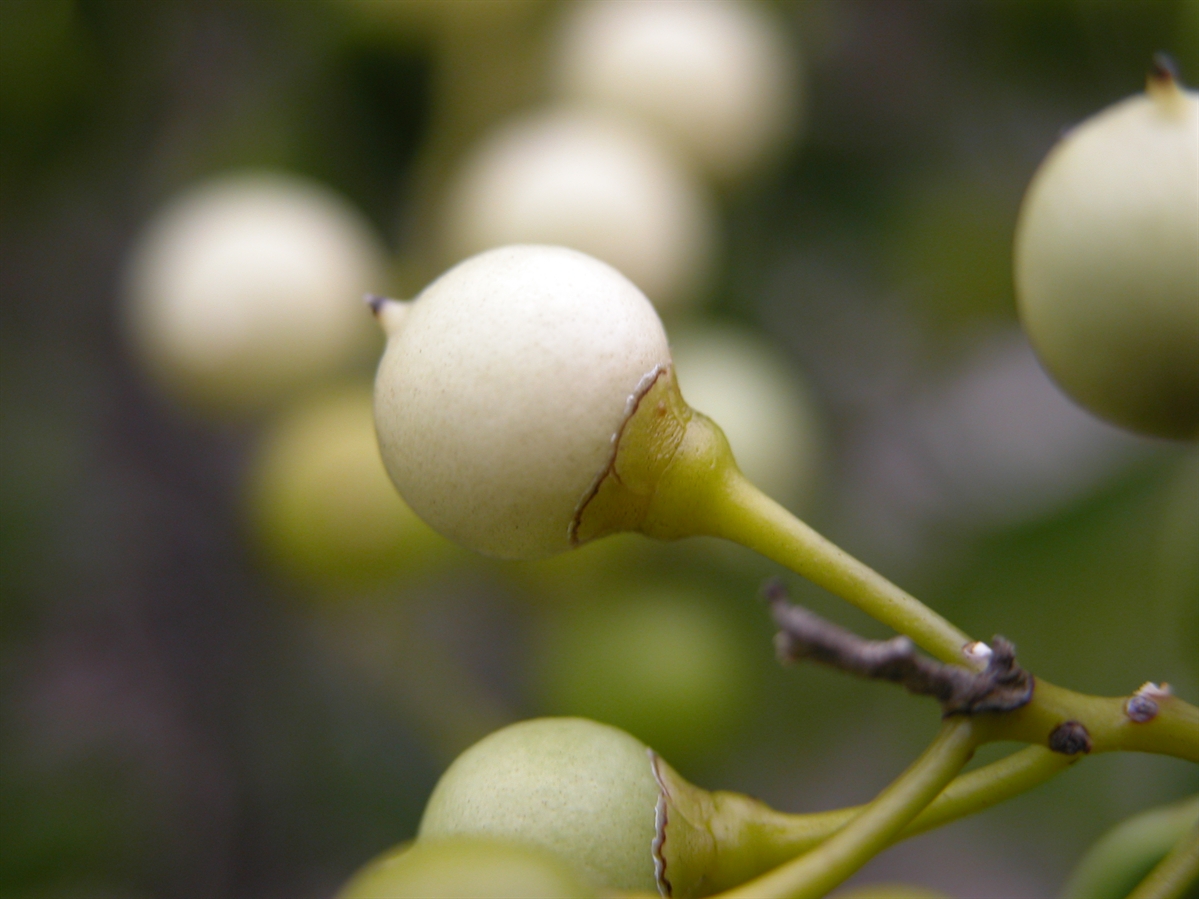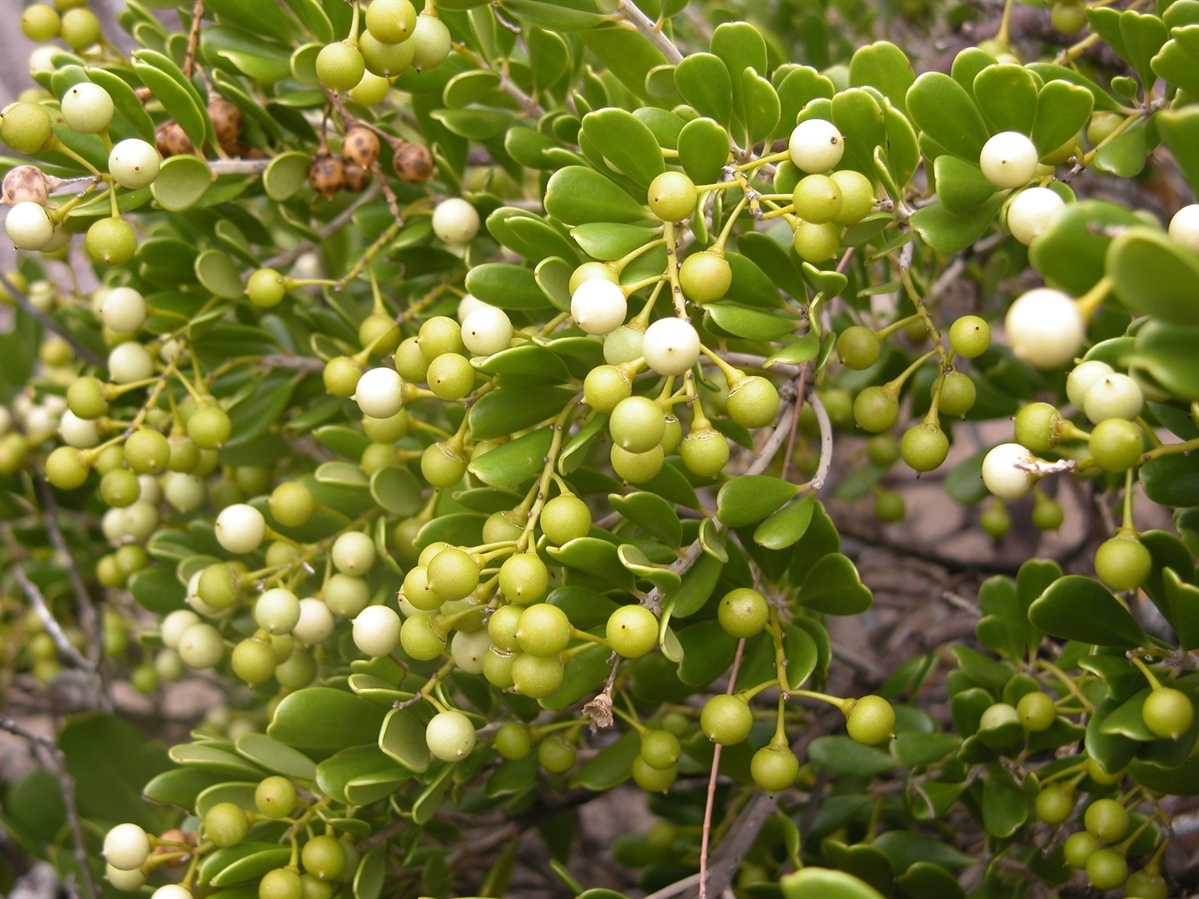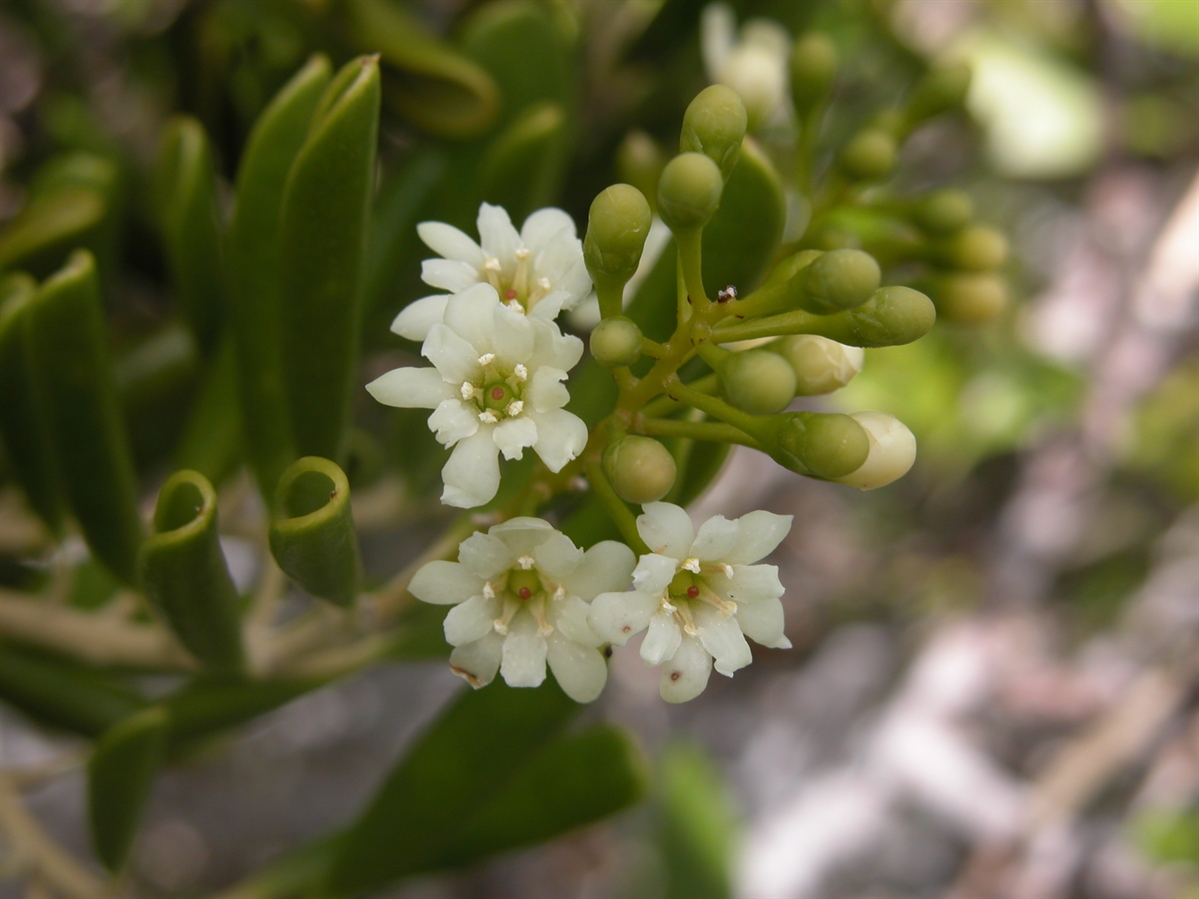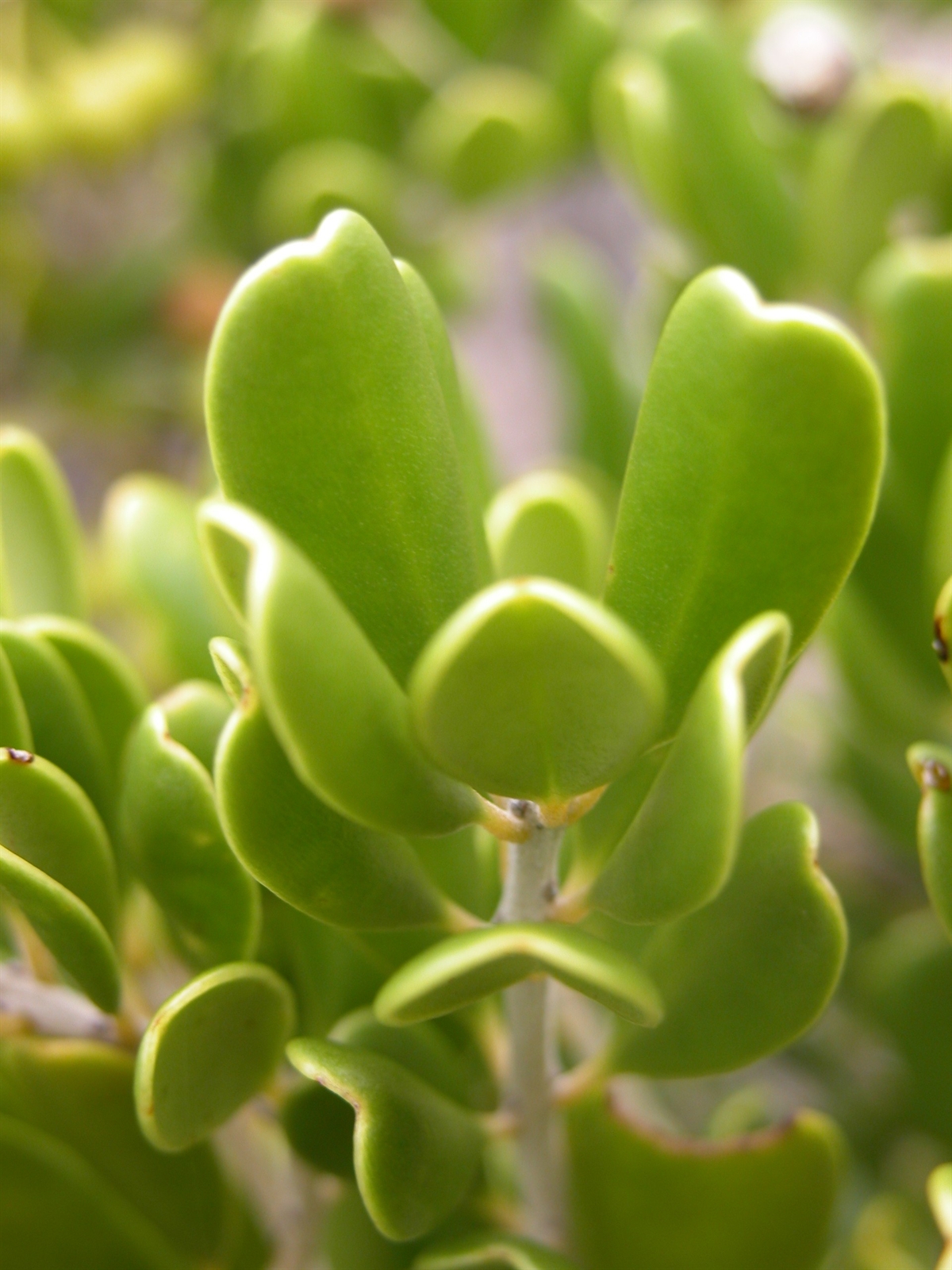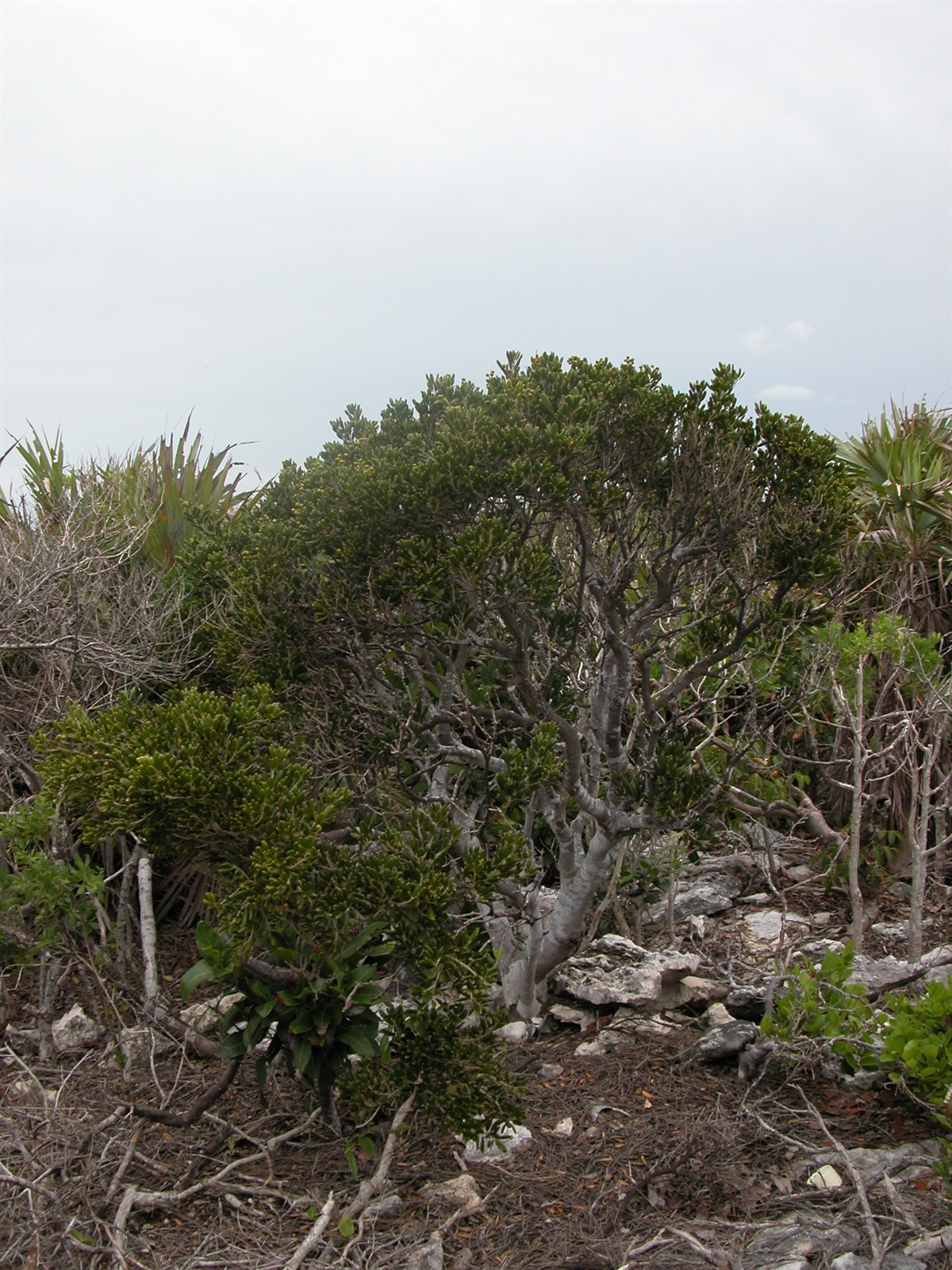Habit: Jacquinia keyensis grows as a large shrub to small tree up to 7 m in height and to 30 cm in diameter. The bark is smooth and grey. The leaves are arranged alternately, to 5 cm long and 2 cm wide. The leaves are stiff/coriaceous, oblong to spatulate with a round or retuse leaf apex and entire margin. The leaf margins are revolute.
The fragrant, complete, perfect, actinomorphic flowers are arranged in terminal racemes. The calyx has 5 unfused green sepals. The corolla has 5 unfused salverform shaped white petals. There are 5 stamens and 5 staminodia. The ovary is superior with a single locule and numerous seeds. The fruit is a berry that turns whitish yellow to orange at maturity.
Habitat: Jacquinia keyensis grows along shorelines in Dry Broadleaf Evergreen Formation-Shrublands (coastal scrublands) as well as in Dwarf Rhachicallis americana shrublands (Rocky Shores/Iron Shores).
Distribution: Jacquinia keyensis occurs on all island groups in the Lucayan Archipelago as well as south Florida and the Greater Antilles.
Medicinal/Cultural/Economic usage: Jacquinia keyensis is not known to be used medicinally in the Lucayan Archipelago.
It is used in the horticultural trade because of its ability to grow in salty dry environments and showy fragrant flowers. It is a very slow growing tree with a distinctive shape that has a bonsai like appearance.
